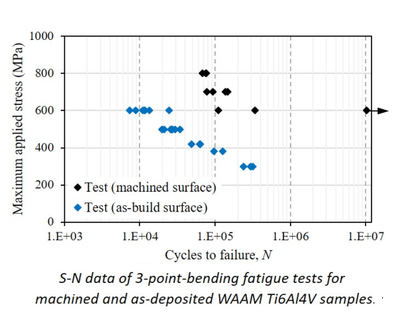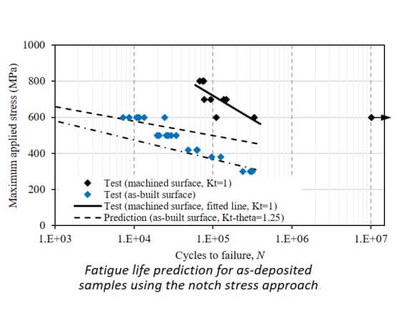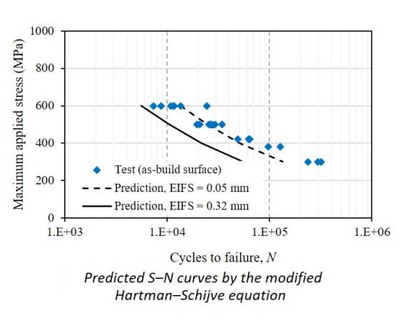


Effect of surface roughness on fatigue life of WAAM Ti64
As deposited surface roughness is one of the concerns for materials produced by directed energy deposition additive manufacturing (AM) processes, particularly when they are used in load bearing applications where they will be subjected to cyclic loading during the service. In this study we have investigated the effect of as-deposited surface conditions on the fatigue strength of titanium alloy Ti-6Al-4V built by wire and arc additive manufacturing process (WAAM). A WAAM Ti-6Al-4V wall of 12 mm thick was built by a single bead deposition process. The feedstock was a grade-5 Ti-6Al-5V wire of 1.2 mm in diameter. The plasma arc was used as a heat source, and Argon gas of 99.99% purity was directed precisely at the melt pool to prevent oxidation. The surface roughness or waviness of the as-deposited wall fully characterised using Mitutoyo FT SV-C3200/4500 series formtracer. The local stress concentration caused by the surface waviness was quantified using finite element modelling. High cycle fatigue tests were conducted under 3-point bending loads at a cyclic load ratio of 0.1. Based on the experimental results, two predictive methods were explored. The traditional notch stress method was unable to predict the correct S–N curve trend slope, which could be attributed to the early crack initiation from the troughs on the as-built surface, with crack propagation being the dominant failure mechanism. By treating the troughs as small cracks, the fracture mechanics approach delivered good predictions at every applied stress level. This research demonstrated that the fracture mechanics approach can be used for predicting the fatigue life of WAAM built titanium alloys in as-deposited conditions and, hence, can be a tool for decision making on the level of acceptable surface machining.
M. Shamir, X. Zhang, A. K. Syed, and W. Sadler, “Predicting the Effect of Surface Waviness on Fatigue Life of a Wire + Arc Additive Manufactured Ti-6Al-4V Alloy,” Materials, vol. 16, no. 15, p. 5355, Jul. 2023, doi: 10.3390/ma16155355.
Information
- Research Area:Material Performance
-
Investigators:
Abdul Khadar Syed
, Xiang Zhang - Publications:https://doi.org/10.3390/ma16155355
